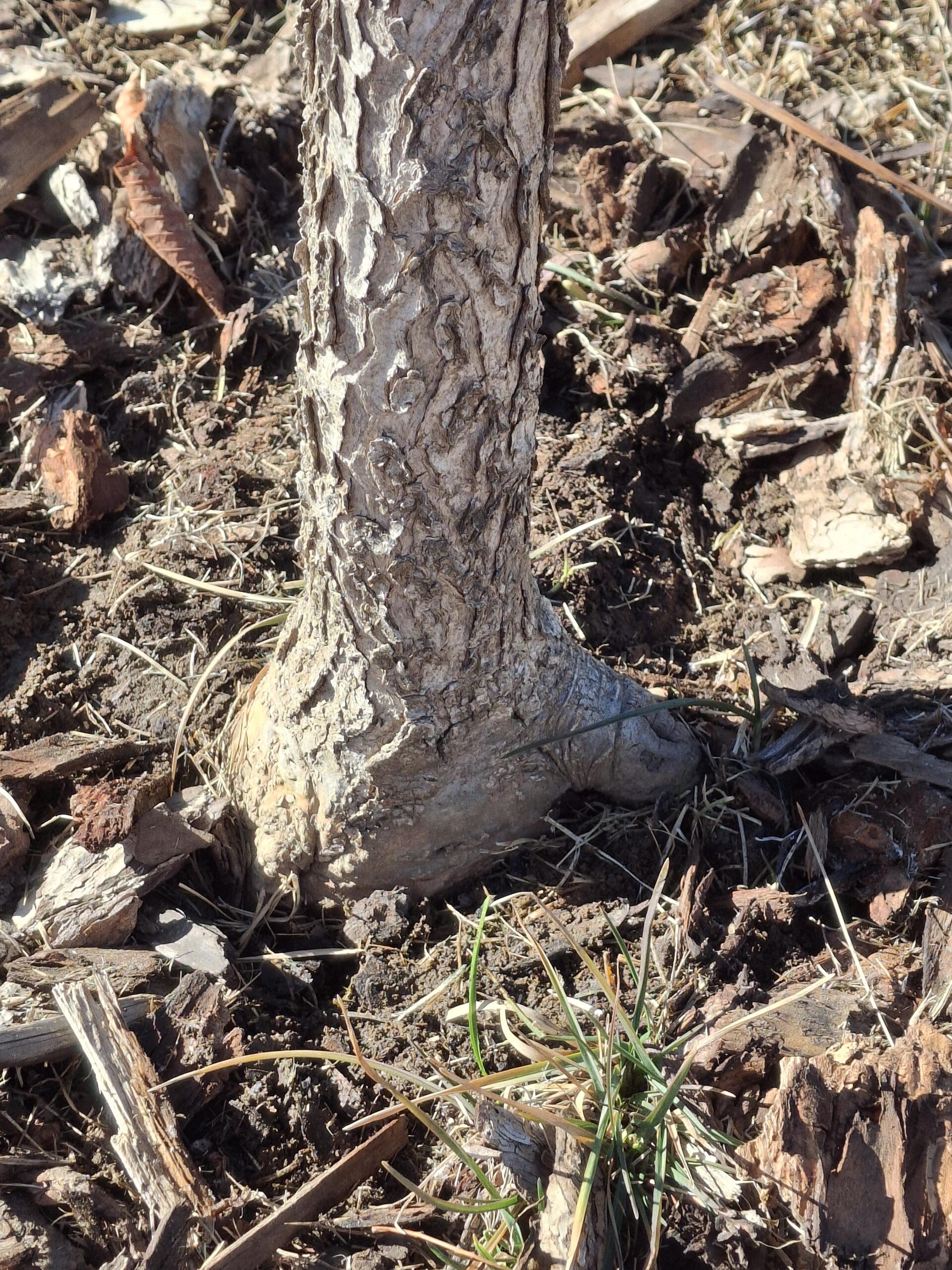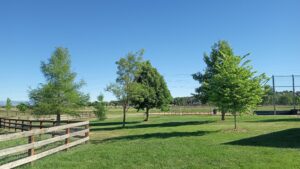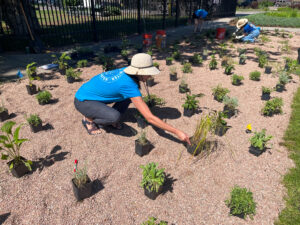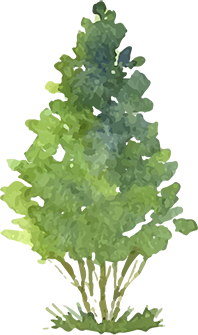Arborist’s Corner: Show Us Your Root Flare

Show Us Your Flare!
When it comes to planting, you’ll hear us at The Park People talk a lot about a tree’s root flare, but what is it and why is it such a big deal?
Simply put, the root flare is the junction where the roots meet the trunk. Sometimes it’s called the trunk flare, root crown, or root collar.
On very young trees, it can be difficult to find, so look for the first structural root, which will be about 1/3 the size of the trunk, or the size of your pinky. If this is a container tree or a ball and burlap tree, you may have to remove a few inches of soil from the top of the root ball before you find it.
Oftentimes, you’ll see smaller roots above the first structural root, and these are called adventitious roots. They are unnecessary, so you can clip them off or let them dry out and fall off on their own. Trace the structural root back to the trunk, and the area where the two meet is your root flare. This area needs to be above ground, making that first significant root about an inch below the soil line.
Keep in mind that when a tree is grafted – such as a crabapple – the grafted area can look like a flare. Because of this, it’s wise to double check the location of that primary structural root.

Ok, so what happens if you bury it?
Burying the root flare can cause a myriad of issues that will significantly shorten the lifespan of your tree and even kill it.
Bark decay, which looks like cracks at the soil line, is caused by moisture in the soil being held up against the trunk. This invites pathogens like fungus into the tree, adversely affecting its health.
Roots that are too deep as a result of planting too deep experience reduced oxygen and gas exchange, which leads to suffocation. Roots need a certain amount of oxygen, which they usually get in the first few inches of soil; however, if the roots are deeper, they do not receive the required oxygen, leading to injury or death.
Lower depth also causes roots to surface or girdle while looking for air. Girdling roots can encircle the trunk, constricting vascular tissue that takes up water and nutrients from the soil. Less water and nutrients lead to stress in the tree, and a stressed tree is susceptible to pests and disease.
What does it look like when a tree is too deep?
It’s easy to tell when a tree has been planted too deep: think of a telephone pole stuck in the ground. When planted correctly, the trunk should be a graceful slope leading into the soil. In heavy clay soils, ideally the flare should be about 2 inches above the soil surface.
How does planting too deep show itself in the tree?
When a tree is planted too deep, you’ll sometimes see bark cracking and rotting at the soil line due to moisture held up against the trunk. More commonly, the tips of the tree’s canopy will start to die back, despite having enough water, because the roots are suffocated and unable to take up enough water from the soil. You may even see new growth in the spring that dies off in the summer. Overall, though, you’ll simply notice your tree struggling to live despite your best efforts in watering and mulching.
How to prevent it
There are two main tools in your toolbox to prevent planting your tree too deep. The first tool is simply to not pre-dig the hole in which you will plant your tree. Oftentimes, we try to save time by pre-digging the hole and then getting the tree. However, an important step before digging is to measure the depth of your tree’s root ball or root system. This will determine how deep to dig. While it’s tempting to throw soil back into a hole that is too deep, backfilling creates air pockets which leads to the tree sinking below the soil line, no matter how much you stomp the soil down before putting the tree in the hole.
Your second tool is to find the root flare and remove any excess soil that may be on top of it. It’s not unusual to remove 3”-4” or more of soil from the top of the root ball. Removing this soil gives you a better idea of where your flare is, so you can plant it at the appropriate depth.
So, you’ve already planted it too deep
Removing soil from around the trunk out to where the flare becomes roots may help. This area will likely be about 3′-5′ or more in diameter, depending on the size of your tree. Level out the soil grade as much as possible to keep soil from falling back into your excavated area. To see what this looks like in action, check out this video from Board Certified Master Arborist Lindsey Purcell from Purdue University Extension. https://www.youtube.com/watch?v=yutZXXU6eHo
Categories
Archives
Support us with a Donation
Related Posts

Arborist’s Corner: Show Us Your Root Flare

Arborist’s Corner: The Importance of Biodiversity in the Landscape



